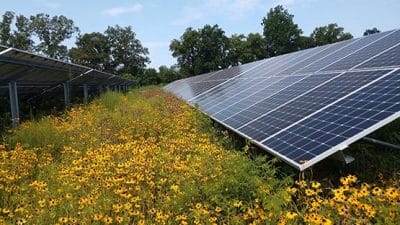
From the editors of E/The Environmental Magazine
Dear EarthTalk: Are sunscreens safe? Which ones do you recommend that will protect my skin from the sun and not cause other issues?
– Bettina E., New York, N.Y.
Getting a little sunshine is important for helping our bodies generate Vitamin D, an important supplement for strong bones, and f or regulating our levels of serotonin and tryptamine, neurotransmitters that keep our moods and sleep/wake cycles in order. Like anything, though, too much sun can cause health issues, from sunburns to skin cancer. For those of us spend more time in the sun than doctors recommend — they say to stay indoors between 11 a.m. and 3 p.m. on sunny days to be safe — sunscreens can be lifesavers.
Getting too much sun is bad because of ultraviolet radiation, 90 percent of which comes in the form of Ultraviolet A (UVA) rays that are not absorbed by the ozone layer and penetrate deep into our skin. Ultraviolet B (UVB) rays make up the rest. These rays are partially absorbed by the ozone layer (which makes preserving the ozone layer crucial for our health), and because they don’t penetrate our skin as deeply, can cause those lobster-red sunburns. Both types of UV rays are thought to cause skin cancer.
Yet while most sunscreens block out at least some UVB radiation, many don’t screen UVA rays at all, making their use risky. According to the non-profit Environmental Working Group, by far most of the commercially available sunscreens do not provide adequate protection against the sun’s harmful UV radiation and may also contain chemicals with questionable safety records.
In all, 84 percent of the 831 sunscreens EWG tested did not pass health and environmental muster. Many contained potentially harmful chemicals like Benzophenone, homosalate and octyl methoxycinnamate (also called octinoxate), which are known to mimic naturally occurring bodily hormones and can thus throw the body’s systems out of whack. Some also contained Padimate-0 and parsol 1789 (also known as avobenzone), which are suspected of causing DNA damage when exposed to sunlight. Furthermore, EWG found that more than half the sunscreens on the market make questionable product claims about longevity, water resistance and UV protection.
As a result, EWG has called on the U.S. Food & Drug Administration to establish standards for labeling so consumers have a better idea of what they may be buying. In the meantime, consumers looking to find out how their preferred brand stacks up can check out EWG’s online Skin Deep database, which compares thousands of health and beauty products against environmental and human health standards.
The good news is that many companies are now introducing safer sunscreens crafted from plant- and mineral-based ingredients and without chemical additives. Some of the best, according to Skin Deep, are Alba Botanica Sun’s Fragrance-Free Mineral Sunscreen, Avalon Baby’s Sunscreen SPF 18, Badger’s SPF 30 Sunscreen, Burt’s Bees’ Chemical-Free Sunscreen SPF 15, California Baby’s SPF 30, Juice Beauty’s Green Apple SPF 15 Moisturizer, and Kabana’s Green Screen SPF 15. Natural foods markets stock many of these, or they can be found online at websites like Sun Protection Center and Drugstore.com.
GOT AN ENVIRONMENTAL QUESTION? Send it to: EarthTalk, c/o E/The Environmental Magazine, P.O. Box 5098, Westport, CT 06881; submit it at: www.emagazine.com/earthtalk/thisweek/, or e-mail: [email protected]. Read past columns at: www.emagazine.com/earthtalk/archives.php.










